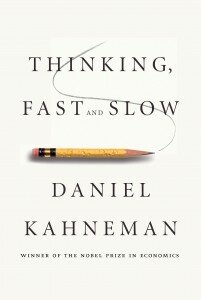Is your brand story merely plausible?
Some years ago I led the public relations launch of a next-generation “bet your company” software platform for my employer at the time. The product promised to transform an industry and ensure the business retained its star status. Those of us charged with the product marketing did a fabulous job of storytelling. We had the national trade media eating out of our palms, giving us positive, prominent coverage in one publication after another.
But there was one small problem: Our firm never delivered the product — at least not nearly as advertised.
We had sold an incredible story, not an incredible product.
Today, I am looking back at that experience through the lens of one of the most provocative books I have read in years: “Thinking , Fast and Slow” by Daniel Kahneman, winner of the 2002 Nobel Prize in Economic Sciences. Kahneman is actually a psychologist but his work around decision making challenged the prevailing rational model of judgment in economics. He is professor emeritus at Princeton University.
, Fast and Slow” by Daniel Kahneman, winner of the 2002 Nobel Prize in Economic Sciences. Kahneman is actually a psychologist but his work around decision making challenged the prevailing rational model of judgment in economics. He is professor emeritus at Princeton University.
Kahneman’s book, published in 2011, brings together his decades of research and thinking into a single volume. Although written for a general audience, it presents an almost endless stream of insights and warnings for those of us in branding or marketing willing to apply his research to what we do.
One of those warnings: Beware of the brand story that is merely plausible. We marketers play a crucial gatekeeper role with the stories organizations tell. But it takes some effort to resist the story we wish were true in favor of the one that probably is.
Plausible, not probable
For some years after the launch of the-product-that-wasn’t, my joking words of advice were: “Never let facts get in the way of a good story.” Turns out, most of us don’t.
As Kahneman’s research proves in spades, our automatic self (he calls System 1) dominates our effortful self (System 2) in most aspects of our lives. The fast-thinking System 1 is constantly spinning stories out of the flimsiest of material in a never-ending attempt to create coherence of events and experiences in our lives and world.
“The most coherent stories are not necessarily the most probable, but they are plausible,” Kahneman says. We humans routinely neglect or misunderstand statistical probability in our beliefs and decisions and in the stories we end up telling ourselves about them. Why? Because System 2 is lazy, according to Kahneman.
The evidence is persuasive: activities that impose high demands on System 2 require self-control, and the exertion of self-control is depleting and unpleasant.
The story I was involved in telling on behalf of my employer was highly plausible because it was coming from a company that was considered the industry leader. But given what we were promising as a company, our story was also highly improbable.
Ignoring the red flags
One of the company founders told everyone inside the company that few software companies with large customer bases successfully manage to transition them to the next-generation product. He meant it as a rallying cry. It should have been a red flag.
In all probability, we would not succeed because few companies in our position before us were successful. But no one stopped to seriously question our prospects. Not only did our company downplay the odds, it promised far more in the product than what was remotely possible in the time frame we announced it would ship. So it became even less likely the product would succeed.
seriously question our prospects. Not only did our company downplay the odds, it promised far more in the product than what was remotely possible in the time frame we announced it would ship. So it became even less likely the product would succeed.
But, man, did we ever tell a great story. The company’s System 1 fired on all cylinders. Our fantastic story was plausible because the company had a track record of tremendous growth, charismatic leadership and some loyal customers and industry pundits willing to say they liked what they were seeing and hearing from us.
Our System 2, however, failed us. In a company of “rational” engineers, no one in a position of authority said what needed to be said: “We have almost no chance of delivering what we are promising, not only in the time frame we’re committing to, but ever.”
Instead, we let the System 1 storyteller run the show. Ultimately, the inability to deliver as promised contributed to a layoff of hundreds of employees. Even the co-founder who tried to rally everyone behind the mammoth undertaking lost his job.
Waking up your System 2
With the help of Kahneman’s findings, I have new appreciation for how easily organizations delude themselves. Spinning heroic business tales apparently doesn’t take much effort. Plus it’s emotionally satisfying. Who wouldn’t choose that over exerting self-control, challenging the organization’s System 1 auto pilot and stopping the story rocket before it launches.
What this means for branding and marketing professionals is we have to guard against easy narratives that send emotions soaring only to sink under the weight of reality.
A brand is a promise of an experience. When our organization’s System 1 is in charge, our brand stories can get far ahead of our ability to deliver as promised. And as my former employer learned, that can have disastrous consequences in the form of lost jobs, damaged reputations and severed customer relationships.
Today’s brands rise and fall on their ability to meet customer and stakeholder demands for authenticity, transparency and integrity. That’s a job for System 2. Does it need a wake-up call in your business or nonprofit?

